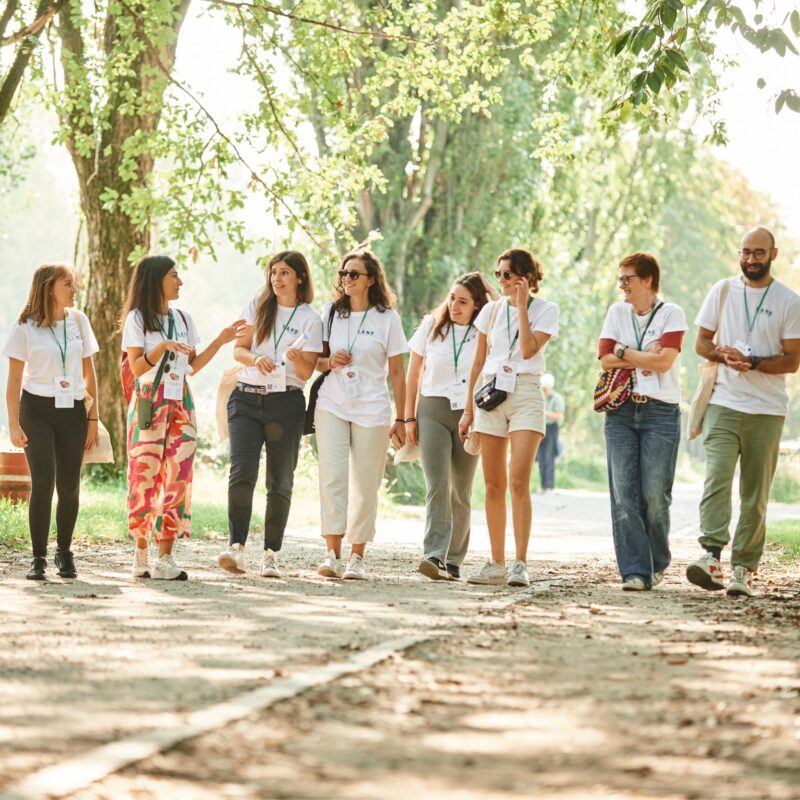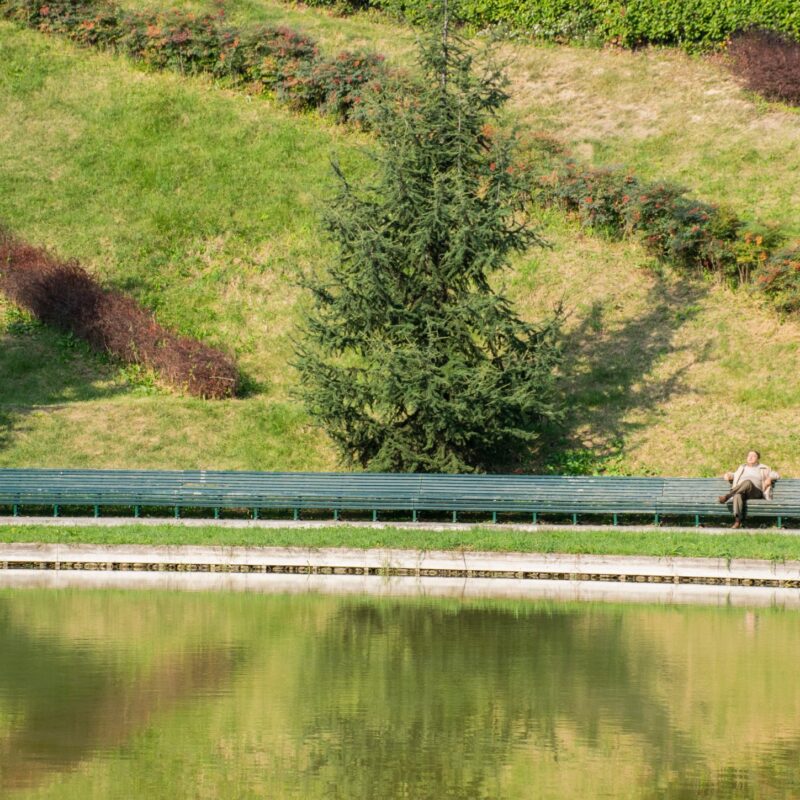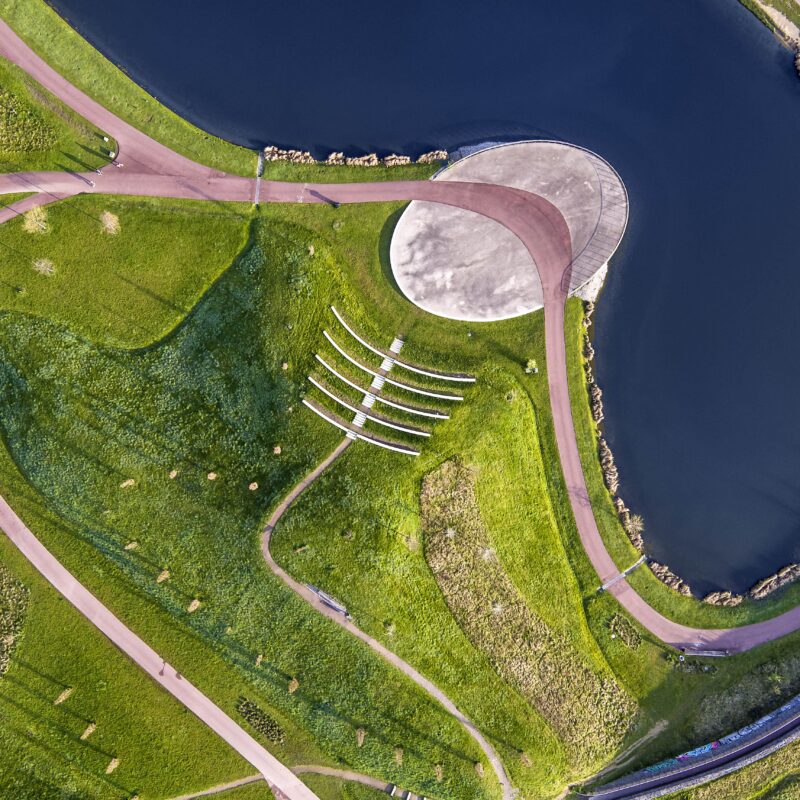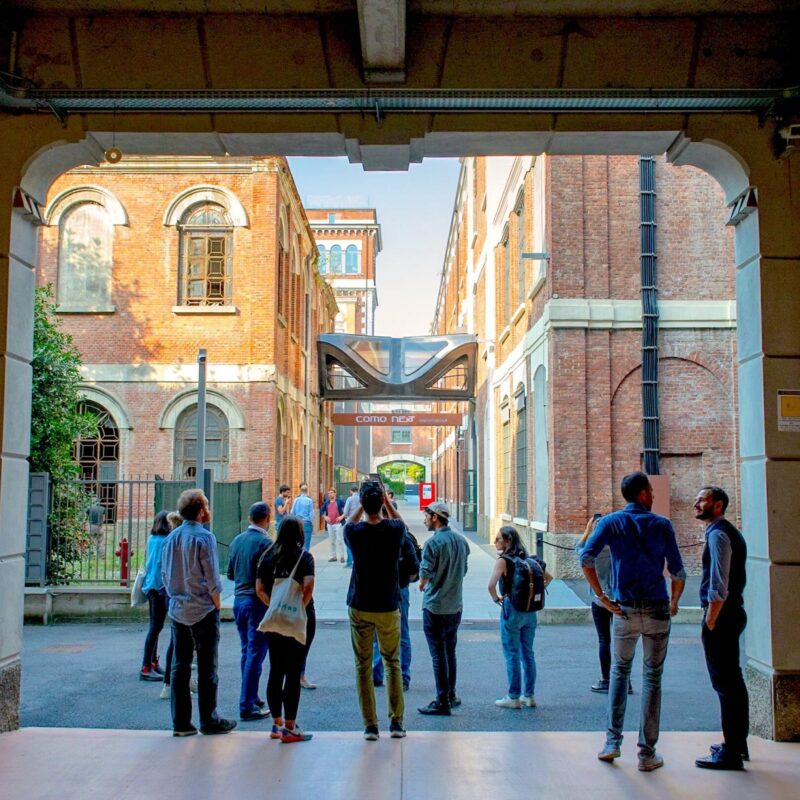
Hello Tanja! Hello Tom!
Art, Nature, work and the filling station of inspiration – a conversation between an artist and a strategy consultant who cultivates intuition
Conversation via video call (August 2021, moderated by Andrea Küpfer).
Text: Henning Klüver
The relationship between Art and Nature is a huge topic. Leonardo believed that Nature was the source of all knowledge and a true model for Art. This relationship runs the gamut, from ancient villa complexes to Baroque-era gardens to Joseph Beuys‘s oak trees and Andreas Kipar’s Luther Garden. The sculptures of the artist Thomas Schönauer of Düsseldorf would also be unthinkable without this charged relationship with Nature, with the urban landscape. But what does Art do to us, what does Nature trigger in us? In a conversation between Thomas (Tom) and his good friend Tanja Schug from Zurich, a business strategist who cultivates intuition, the topic is creativity in business and in urban development as it relates to Art and Nature. Here are some excerpts:

Thomas Schönauer is an artist who lives and works in Düsseldorf. He also created the Heavenly Cross for the Luther Garden in Wittenberg. His most recent exhibition is "Cultivating - Kunst und Garten im Einklang" (Schloss Dyck Gardens, Jüchen, 2021-22). Associate member of the BDA (Association of German Architects). He and friends founded the aid organization "favela education."
Tanja: “For me, it’s all about sharpening your senses to reveal a new perspective. If you’re stuck in your usual professional environment, surrounded only by people in your own bubble, then you’ll soon run out of anything like new ideas and individual thinking. My goal is to help people break their routine. And I use art as well as nature to do it. For example, when I go to an exhibition with clients. Like Gerhard Richter’s “Landscape” exhibition, which shows a bird’s eye view of a cityscape, where the whole is recognizable as a city, but the details have to be interpreted. Where’s the street, where’s the building? The big picture remains the focal point, but you have the freedom to use your sharp senses to interpret the details. That was the point.”
Tom: “And that, Tanja, is what art is all about. It’s about asking questions and not being satisfied with the first good answer. It’s about keeping a list of questions. Where might the reference points be, or how could I create them? How do we create a perspective for ourselves by constantly changing it? You can no longer accept an outdated pattern in this world that’s constantly changing so much.”
Tanja: “The pandemic gave us a new way into nature. Before that, we hardly noticed it. It was important to move forward, to look ahead, not right or left. And suddenly we‘re stuck in forward and we’re forced to look right and left again. That’s where nature and art come into play, that’s where we discover something new. You take a walk and you feel what peace that can trigger. What inspires me when I see trees. Their size, the power of rootedness. New insecurity looms with the next lockdown, and when I look at the trees, I long to know how I can find this strength, this stability for myself. Nature can broaden your perspective.”

Tanja Schug is a communications expert who in 2018 founded the company “Zero Senses” in Zurich, after working for many years in an international consulting firm. She accompanies executives with strategy development by combining intuition with classical analysis.
Tom: “When an entrepreneur sends their people to my studio, I want them to look left and right. Not only to perceive art, but also to ask themselves: why is this guy actually doing this, how courageous is he? Being an artist and constantly redefining yourself takes courage. You can’t follow familiar paths, you always have to look for new ones.”
Tanja: “How can I follow new paths? Classic paths are losing their importance. A new, younger generation is on the way, one that’s no longer interested in careers. They’re looking for meaning, for significance. The currency of money is no longer important to this generation. They’re thinking about other currencies, the currency of community, for example. But it takes courage to leave the old ways that you mentioned, Tom. Art can be a role model and an inspiration. Artists are in a permanent confrontation, and in the end their work expresses the whole. I think you can use that as a source of inspiration in these uncertain times.”
Tom: “Gardens like the artistic Luther Garden that Andreas Kipar designed in Wittenberg can inspire me to contribute with my own work. As an example, you can see this in the Schloss Dyck gardens, where nature is extremely cultivated. I added urban acupuncture there, sculptures that sit at chakra points, which one does not perceive cognitively, but purely emotionally. These are energies that are released. What Andreas and I keep saying is that we need to bring these energies into the city. We’ve been criminally neglecting our cities, we need to free them now. We have a huge opportunity.”

Tanja: “I see the role of artist and my role as a consultant as something similar to a curator. A curator’s task is to put together an exhibition so that the individual works can be understood in context. The job of curating also applies to the environment of the city in the integration of art and nature. This will become the future for many of us: being a curator in society.”
Tom: “Yes, but we have to act fast. Here and there things are already starting to move, for example with the creation of 15-minute neighborhoods. In the meantime, even developers are getting involved, who of course also have a financial interest in ensuring that inner cities don’t completely fall apart and cause rents to drop.”
Tanja: “The idea of community is becoming more and more prevalent. It’s quite interesting: the bigger and freer we become, the more we long for closeness, for short distances, for security, for the familiar that promises safety. But careful: we also need new perspectives, new ways. The balance between the two keeps us from toppling over.”
Tom: “Man is and remains a cave dweller. Bringing this to the city is the major task of neighborhood development. This is where landscape architects take center stage. For me, I’m not like a Basquiat or a Kippenberger who needs the chaos and con-fusion of the big city to inspire me. I’d rather withdraw into nature, which can be perceived in a very individual way. Nature is a source of energy. When I hike, when I physically exert myself, then my tank refills with energy. But that’s not automatically a filling station of inspiration. That comes later.”

Tanja: “Nature can bring in energy, create balance. The next step is debate. For example, a conversation where someone challenges you. Nature alone is not enough; you need context. It can also be unsettling, just as art does not have to be beautiful. Art must challenge you to think further, to develop new perspectives.”
Tom: “We have a responsibility there, we have to take design into our own hands. A social respon- sibility so that society can be inspired by both natural and urban environments. Design doesn’t just happen, we can’t just wait for someone else to do it.”
Tanja: “Influence the places where daily life takes place. Certainly not the executive floors of bicorporations, but in everyday city life. That’s where you have to exert influence.”
Tom: “Young people are showing us the way forward on this earth. It‘s quite simply a matter of survival.”
Tanja: “For the past 60 years, we haven’t worried about our survival. But now primordial human issues are rising to the surface again, issues we had repressed. We were like machines. Now we have to become human again, reconcile with Nature. But can we do that? That, Tom, is the young generation’s gift to us as we move forward: primordial human fears but also the strength and courage to become more human.”
Tom: “We need that, Tanja, yes. Because Nature itself has become the threat. Nature is now striking back. It’s punishing us because we have punished it. We won’t be able to survive in the long run unless we change our behavior. That’s the issue. Art can be a key to raising awareness of this.”
Conversation via video call (August 2021, moderated by Andrea Küpfer). Text: Henning Klüver
Read other Articles from this Edition






